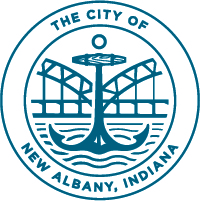New Albany Public Housing Plans Advancing
/In April of last year, the City of New Albany entered into a contractual agreement with Patrick Costigan and CF Housing Group, headquartered in Washington, DC to assist the New Albany Housing Authority in planning a strategy to meet the capital maintenance needs of the public housing authority.
As part of this process, along with the creation of an updated comprehensive plan for the city, recommendations have been made for a reduction in overall housing authority units. The new comprehensive plan calls for a reduction of units, along with a decentralization of current units in New Albany. The housing authority will soon begin demolition on 7 buildings, totaling 44 units, in the Parkview/Broadmeade neighborhood.
“This marks the beginning steps the City of New Albany and the New Albany Housing Authority will be taking to improve public housing. In conjunction with the comprehensive plan and the recommendation of CF Housing Group, we will reduce the density of public housing on HUD properties inside the city limits, improve existing public housing stock, and improve the quality of life for all residents,” stated Mayor Gahan.
Additionally, Mayor Gahan appointed three new members to the New Albany Housing Authority board. The NAHA board oversees operations of the local, federally funded housing authority. Recently appointed were Stanley E. Robison, Jr. and Dr. Irvin Joshua, who will begin serving immediately. A third appointment, Mr. Bob Norwood, will take effect beginning March 31, 2017.
Stanley Robison is a local attorney and public servant, serving as New Albany City Attorney from 2011-2015. Mr. Robison has over 30 years’ experience as a litigator, criminal lawyer, and family law attorney.
Stanley Robison, Jr.
Dr. Irving Joshua
Dr. Irving Joshua is the chairman of the University of Louisville’s Department of Physiology. He has served as member of the New Albany Redevelopment Commission since being appointed by the New Albany City Council in 2000. Since 2005, he has served as the president of the Redevelopment Commission. He is a resident of New Albany for over 35 years, and has served in a number of civic organizations, including the NAACP, the advisory board to the New Albany Floyd County School Corporation, the Jones Memorial AME Zion Church, Board of Directors for the New Albany YMCA, and the New Albany comprehensive plan steering committee.
“I’m enthused about participating on the Housing Authority and having an opportunity to provide direction and guidance related to improved housing and career opportunities for individuals in the low-income segment of our community,” stated Dr. Joshua.
Mr. Bob Norwood entered into the financial business after attending IU and worked for Union National Bank for nearly a decade. Since 1984, he is the owner and founder of Norwood Insurance.







